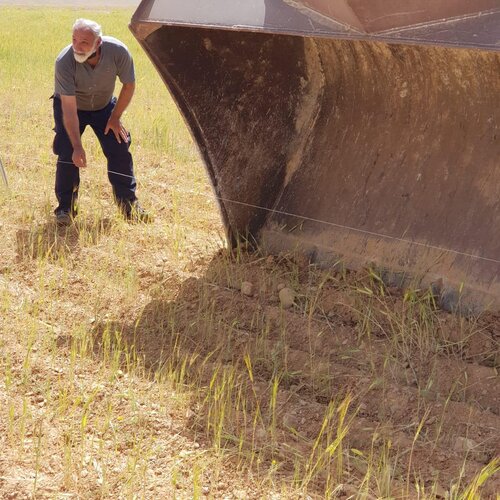In Lebanon, agroforestry is gaining ground as evidenced by numerous initiatives. The association "A Tree For You" for example, resorts to it in Hammana and Anjar to restore degraded ecosystems and increase the incomes of local populations. Virtuous in combating drought, soil degradation, desertification, and loss of biodiversity, it could reshape the Lebanese countryside.
Agroforestry, which combines agriculture, forestry, and livestock on the same plot, is not a new technique in Lebanon. This ancestral practice has long been used by Lebanese farmers to improve soil fertility, combat erosion, and diversify their productions. In the face of environmental and climatic challenges, this promising approach promotes a more sustainable and resilient agriculture.
Agroforestry in Lebanon: Concrete Solutions for Major Challenges
Lebanon is facing many environmental and climate challenges, such as drought, soil degradation, desertification, and loss of biodiversity.
In mountainous regions, soil erosion poses a major threat to agricultural productivity. Pilot projects, such as the one carried out in Bcharré by the NGO
Jouzour Loubnan and AFAF (French Agroforestry Association), demonstrate the effectiveness of agroforestry in combating this phenomenon. The establishment of hedgerows and agroforestry systems on terraces helps to slow down rainwater runoff, thus reducing erosion and promoting water infiltration into the soil.
Furthermore, trees, thanks to their deep root system and the production of litter rich in nutrients, help to enrich the soil and improve its fertility. Soil analyses conducted as part of these projects have shown an increase in organic matter and an improvement in soil structure in the plots where agroforestry has been practiced.
Reforestation and increase in income for local populations
The reforestation initiative led by the association A Tree For You in Hammana and Anjar illustrates the potential of agroforestry to restore degraded ecosystems and increase the income of local populations. Planting fruit and forest trees, combined with vegetable crops, helps to replenish depleted soils, improve water quality, and diversify farmers' sources of income. The results of this initiative are encouraging: thousands of trees have been planted, water quality has improved, and participating farmers have seen an increase in their income through the sale of their products.
Water Conservation and Soil Protection in Chouf
Facing the drought affecting a large part of Lebanon, agroforestry offers concrete solutions to conserve water and protect soils. In Chouf, farmers have adopted the practice of planting rows of cypress and pine trees among their olive trees. These trees play a crucial role in combating soil erosion by slowing down the runoff of rainwater. They also contribute to water conservation by intercepting some of the precipitation and allowing better water infiltration into the soil. Furthermore, the trees create a microclimate more favorable to the olive trees, reducing the impact of wind and sun.
Integration of nitrogen-fixing trees in the Bekaa Valley
In the Bekaa Valley, a fertile region in Lebanon known for its cereal crops, the integration of nitrogen-fixing trees, such as carob and gleditsia, into agricultural production systems helps reduce dependence on chemical fertilizers and improve soil fertility. These trees, thanks to root nodules hosting symbiotic bacteria, have the ability to fix atmospheric nitrogen and make it available to neighboring crops. This practice offers many advantages for farmers: it reduces production costs, improves soil fertility in the long term, and promotes biodiversity.
Diversification of Crops in Akkar

The Akkar, a region in northern Lebanon with a strong agricultural vocation, is also experimenting with agroforestry to increase farmers' incomes and meet local demand. Establishing systems that combine fruit trees, such as apple and fig trees, with vegetable crops helps diversify production. This also meets the growing needs of the local market for fresh and healthy products. Furthermore, this diversification of crops helps improve food security for local populations and optimize the use of agricultural land.
Accompanied by training and awareness
Faced with the environmental and socio-economic challenges that Lebanon is facing, agroforestry thus emerges as a promising and multifunctional solution. To promote this practice, concrete actions must now be implemented: training programs and technical support for farmers. Grants for investment in trees and infrastructure. Incentives for research and development to optimize agroforestry systems. At the same time, awareness campaigns targeting the public and policymakers are crucial to emphasize the environmental and economic benefits of agroforestry and promote its integration into national agricultural policies. By adopting a comprehensive and proactive approach, Lebanon can fully leverage the potential of agroforestry to build a more sustainable and prosperous future.
